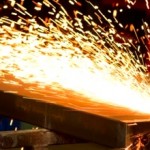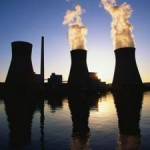
Washington, D.C. – The American Physical Society (APS) has released a new assessment – “Direct Air Capture of CO2 with Chemicals” – to better inform the scientific community on the technical aspects of removing carbon dioxide from the atmosphere.
In systems achieving direct air capture (DAC) of carbon dioxide (CO2), ambient air flows over a chemical sorbent, either liquid or solid, that selectively removes the CO2. The CO2 is then released as a concentrated stream for disposal or reuse, while the sorbent is regenerated and the CO2-depleted air is returned to the atmosphere.
DAC is now included in discussions of climate change policy because it is among the few strategies that might lower the atmospheric concentration of CO2 to reduce the negative impacts of climate change. However, the intent of this assessment is not to make specific policy recommendations.
The assessment is the outcome of a two-year study conducted by a 13-member committee whose members work in industry, academia, and national and government laboratories. It concludes that DAC would play a very limited role in a coherent CO2 mitigation strategy for many decades. Deployment of DAC would not be pursued aggressively until the world has largely eliminated centralized sources of CO2 emissions, especially at coal and natural gas power plants, either by substitution of non-fossil alternatives or by capture of nearly all of their CO2 emissions. For example, it makes little sense to ignore the emissions of CO2 in the flue gas from a coal power plant while removing CO2 from ambient air where it is 300 times more dilute.
The assessment estimates that removing CO2 from the flue gas of a coal power plant would be seven or more times less expensive, relative to a benchmark DAC system that, in the assessment committee’s judgment, is well enough described in the published literature that its costs can be estimated today. The benchmark system removes 1 MtCO2/yr from the atmosphere. Applying a simplified costing methodology used in industry for early-stage projects, its avoided cost is estimated to be at least $ 600/tCO2. Using the same methodology, the estimated avoided cost for “post-combustion capture” of CO2 from the flue gas of a reference coal power plant is about $ 80/tCO2.
A variety of science and engineering issues will determine the ultimate feasibility and competitiveness of DAC. If DAC were to ever have a substantial role in removing CO2 from the atmosphere, it would need to be much less costly than the benchmark system considered in the report. Today, few relevant experimental results have been published, and no demonstration or pilot-scale DAC system has yet been deployed. Improved designs would involve alternative strategies for bringing air into contact with chemicals, new chemistries for sorption and regeneration, materials that can operate effectively and efficiently over thousands of consecutive cycles, and low-carbon energy sources for power and heat in order to avoid emitting more than one CO2 molecule into the atmosphere for each CO2 molecule captured. From what is now known, it would not be wise to delay dealing with climate change on the grounds that at some future time DAC could be available as a significant compensating strategy.
Robert Socolow (Princeton University) served as a co-chair of the DAC study.
Supporting Information
- The physical scale of the air contactor in any DAC system is a formidable challenge. A contactor through which air flows at two meters per second and that removes half of the CO2 from the contacted air will capture about 20 tons of CO2 per year for each square meter of frontal area. A 1,000-megawatt coal power plant emits about 6 million metric tons of CO2 per year, and to remove CO2 from the atmosphere as fast as this coal plant emits CO2, such a system would have a total length of about 30 kilometers if it were based on structures 10-meters high. Large quantities of construction materials and chemicals would be required.
- The assessment did not address challenges related to dealing with CO2 after capture. The storage part of CO2 capture and storage (CCS) must be feasible at huge scale for direct air capture to be viable.
- Understanding the costs of direct air capture will illuminate a ceiling on costs for mitigation and adaptation. When the cost of some mitigation or adaptation measure exceeds the cost of CO2 removal from the atmosphere, it will be more cost-effective to remove the carbon from the atmosphere after it has been emitted than to prevent its emission in the first place. Some mitigation options that today appear to be very costly may never be needed if operable DAC systems become available.
- When a low-carbon energy source can be introduced into a region where centralized high-carbon sources are still present, it will be more cost-effective to eliminate a high-carbon source rather than to provide low-carbon energy for a compensating direct air capture system.
- Direct air capture may have a role to play eventually in countering some decentralized CO2 emissions, such as emissions from buildings and vehicles, which prove expensive to reduce by other means. However, for at least the next few decades, unless there are dramatic cost reductions, compensating for decentralized emissions via direct air capture can be expected to be substantially more expensive than one or another of the currently available alternatives, including 1) substantial improvement of end-use efficiency, 2) electrification accompanied by decarbonization of electricity, and 3) substitution of low-carbon fuel, biologically derived or produced in some other way.
- Direct air capture could at best be deployed slowly. For example, on its own, DAC might be able to reduce the CO2 concentration by 50 parts per million (ppm) over a century (say, from 500 ppm in 2100 to 450 ppm in 2200). However, DAC is not at all matched to the task of reacting quickly to an abrupt climate emergency, which could require reducing the concentration by hundreds of ppm in a decade. The required rates of construction of DAC-related facilities above and below ground to deal with a climate emergency are implausible.
- If humanity someday chooses to reduce the atmospheric CO2 concentration gradually, direct air capture would compete with two terrestrial biological strategies: 1) afforestation, reforestation, and other measures that store additional carbon on the land, and 2) capture of CO2 from bioenergy facilities, such as biomass power plants.
Details of the Assessment Report:
Title of the Study: “Direct Air Capture of CO2 with Chemicals: A Technology Assessment for the APS Panel on Public Affairs”
Authors: Robert Socolow, Michael Desmond, Roger Aines, Jason Blackstock, Olav Bolland, Tina Kaarsberg, Nathan Lewis, Marco Mazzotti, Allen Pfeffer, Karma Sawyer, Jeffrey Siirola, Berend Smit and Jennifer Wilcox
Published by ‘American Physical Society (APS)’ on April 28, 2011.
Check the following link to read/download Full Assessment Study:
http://www.aps.org/policy/reports/popa-reports/loader.cfm?csModule=security/getfile&PageID=244407
About APS
The American Physical Society is a non-profit membership organization working to advance and diffuse the knowledge of physics through its outstanding research journals, scientific meetings, and education, outreach, advocacy and international activities. APS represents 48,000 members, including physicists in academia, national laboratories and industry in the United States and throughout the world. Society offices are located in College Park, MD (Headquarters), Ridge, NY, and Washington, DC. For more information, visit www.aps.org.
Source: APS.














